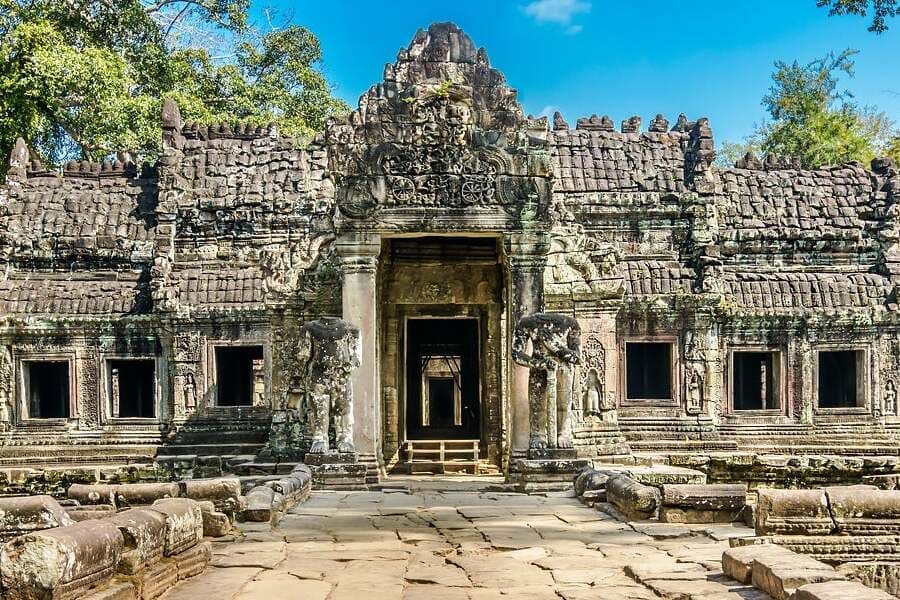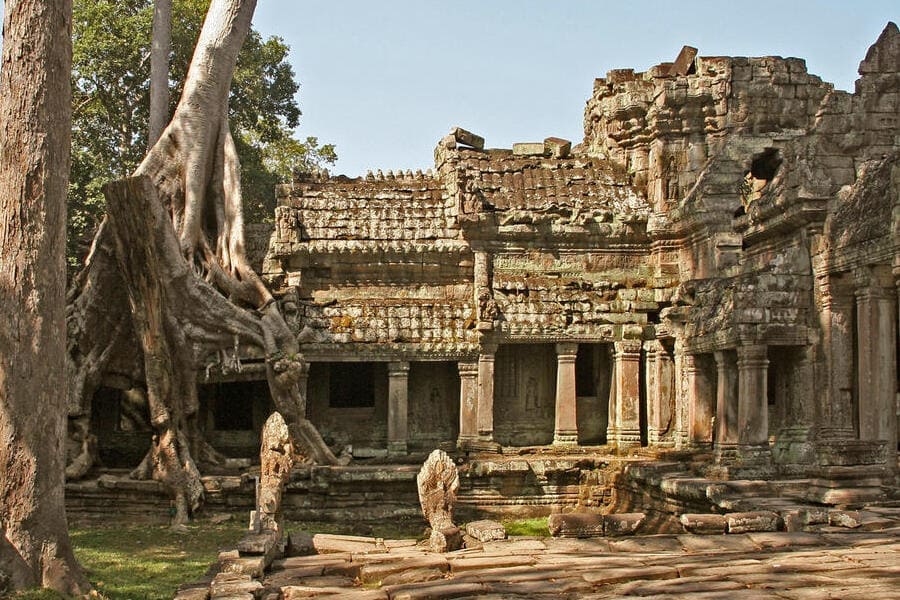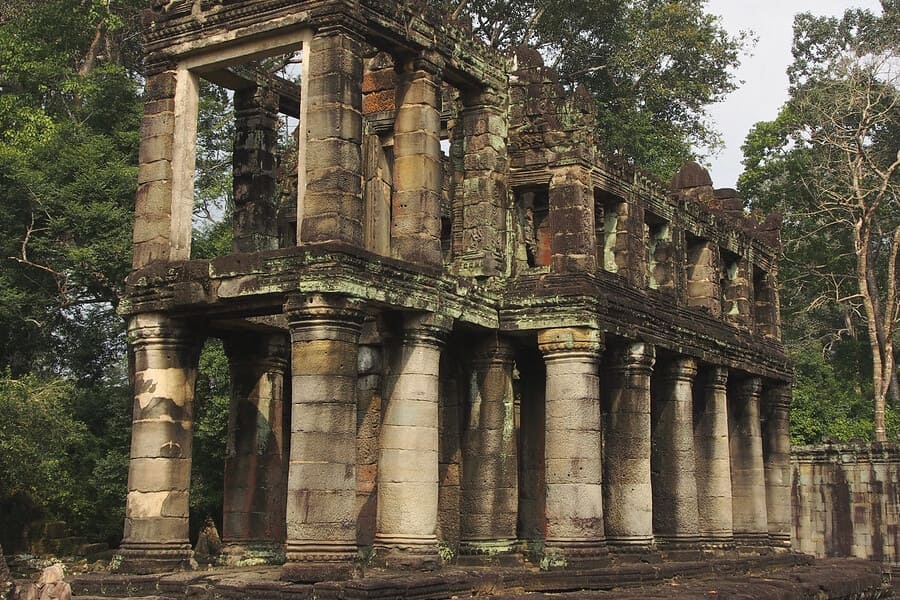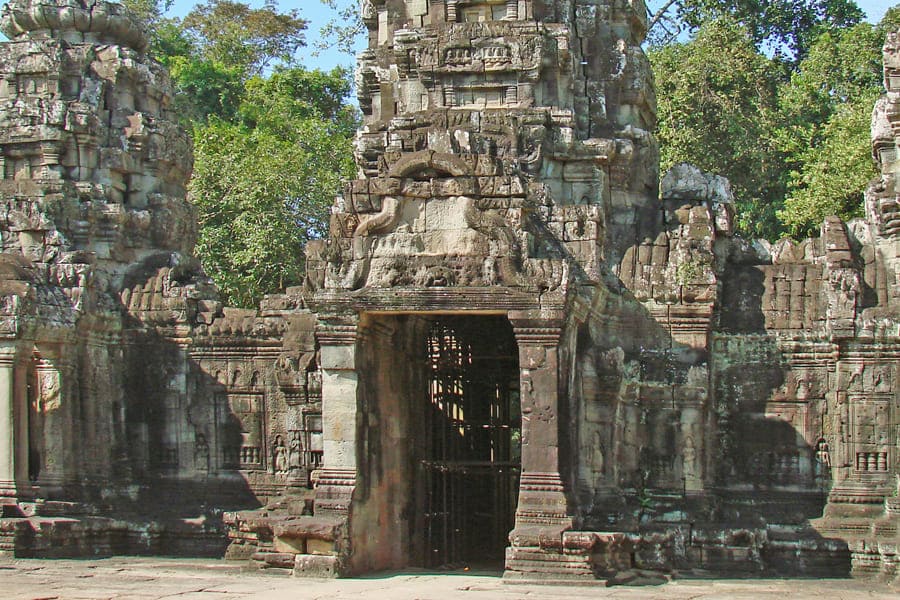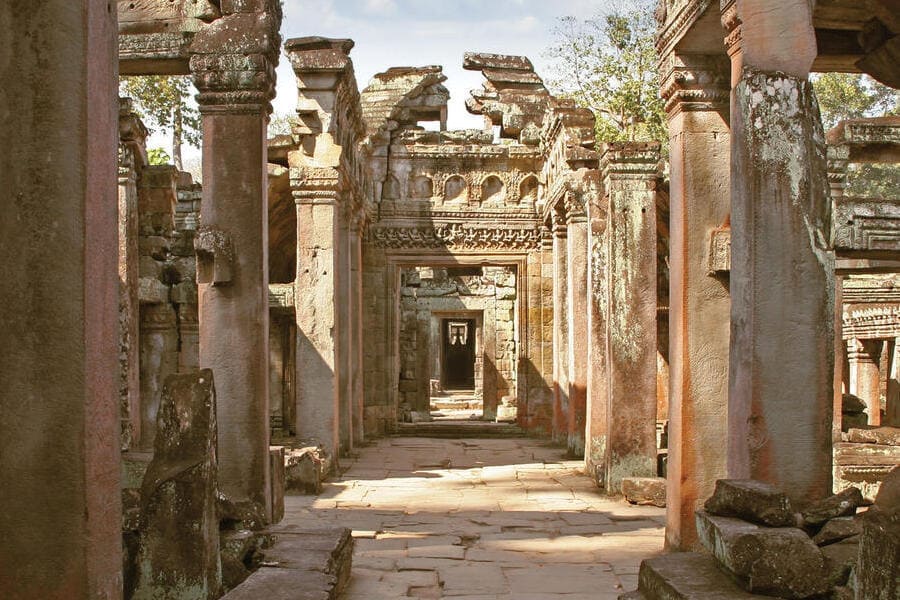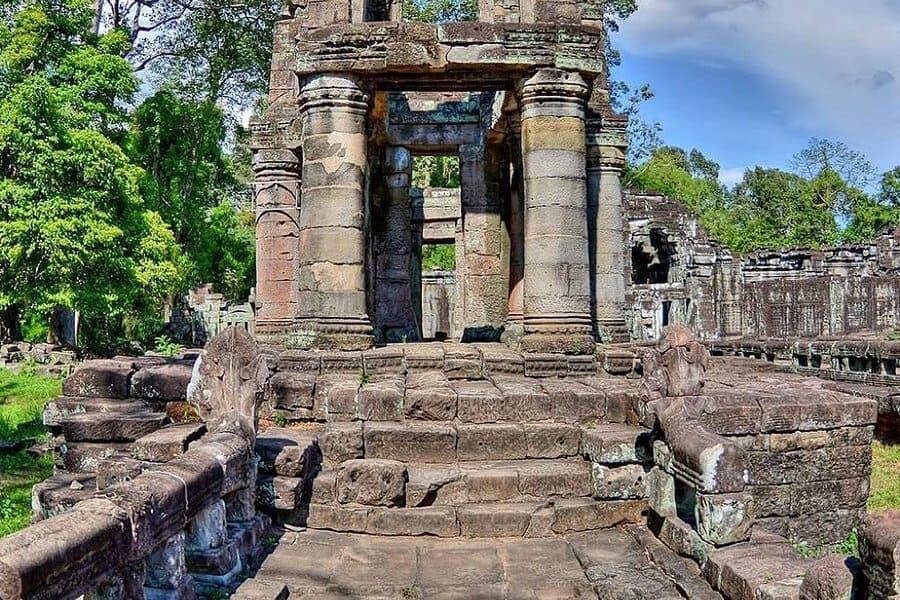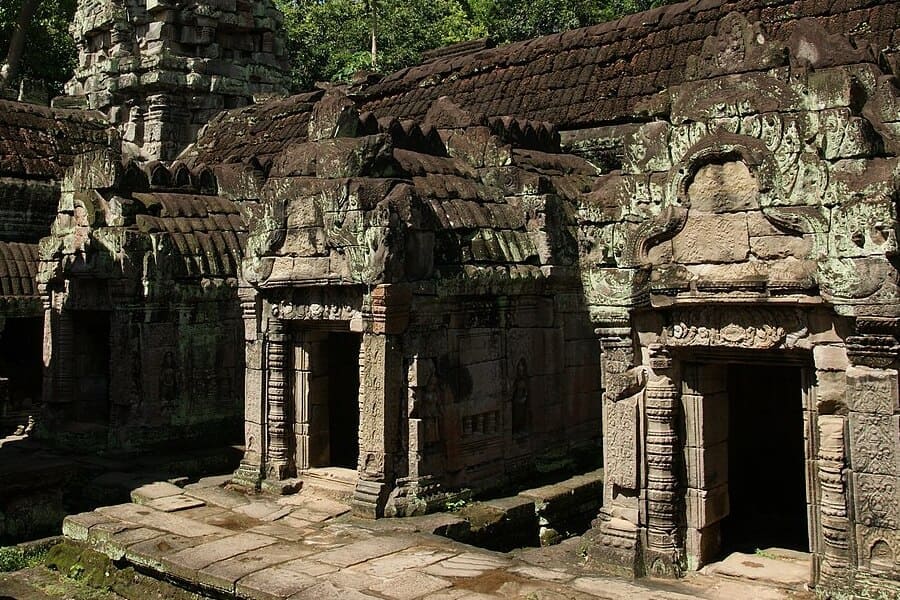During your Cambodia vacation, don’t miss the chance to explore Preah Khan, a sprawling temple complex where ancient ruins intertwine with towering trees. This majestic site offers a captivating blend of history and nature, providing visitors with a unique glimpse into Cambodia’s rich cultural heritage and the enchanting beauty of its historic temples.
Contents
An overview of Preah Khan
The location of Preah Khan
Preah Khan, a sprawling temple complex steeped in history, is nestled in the dense jungles of northern Cambodia, within the Angkor Archaeological Park. Situated approximately four kilometers north of the iconic Angkor Wat, Preah Khan occupies a strategic position along the ancient royal roads that once connected the Khmer Empire’s capital, Angkor Thom, with other important cities and religious sites.
The history of Preah Khan
Preah Khan, meaning “Sacred Sword” in Khmer, was commissioned by King Jayavarman VII, one of Cambodia’s most renowned monarchs, in the late 12th century. Built as a Buddhist monastery and royal residence, Preah Khan served as a center of worship, education, and administration during the Khmer Empire’s golden age.
The temple complex was dedicated to King Jayavarman VII’s father and was designed to honor the king’s devotion to Mahayana Buddhism, a branch of Buddhism that emphasizes compassion and the pursuit of enlightenment for the benefit of all beings. Its construction marked a significant departure from previous Khmer temple designs, with its unique blend of Hindu and Buddhist architectural elements and its expansive layout symbolizing the king’s vision of a unified empire under the banner of Buddhism.
Over the centuries, Preah Khan fell into disrepair as the Khmer Empire waned and the region was engulfed by shifting political dynamics and natural forces. However, the temple complex remained a site of pilgrimage and veneration, with local communities continuing to honor its spiritual significance through rituals and ceremonies.
In modern times, Preah Khan has become a popular destination for tourists and archaeologists alike, drawn by its rich history, architectural beauty, and serene natural surroundings. Efforts to conserve and restore the temple complex have been ongoing, ensuring that future generations can continue to marvel at the wonders of this ancient Khmer masterpiece.
The architectural features of Preah Khan
The architectural features of Preah Khan reflect a remarkable blend of Hindu and Buddhist influences, embodying the architectural and artistic sophistication of the Khmer Empire. Here are some of the key architectural elements of Preah Khan:
Entrances and Enclosures: Preah Khan is surrounded by a series of concentric enclosures, each delineated by intricately decorated gateways known as gopuras. These gateways, adorned with elaborate carvings of deities, mythical creatures, and celestial dancers, serve as portals to the sacred space within.
Central Sanctuary: At the heart of Preah Khan lies the central sanctuary, a towering structure crowned by multiple prasats (towers) and adorned with elaborate bas-reliefs and carvings. This sanctuary served as the main place of worship and is believed to have housed a statue of the Buddha or other important religious figures.
Hall of Dancers: One of the most iconic features of Preah Khan is the Hall of Dancers, a long corridor flanked by intricately carved sandstone columns depicting Apsaras (celestial dancers) in various graceful poses. These carvings exemplify the Khmer Empire’s mastery of sculptural artistry and serve as a testament to the temple’s cultural and religious significance.
Library Buildings: Scattered throughout Preah Khan are several library buildings, characterized by their compact size and simple yet elegant design. These structures were likely used for storing sacred texts and manuscripts, reflecting the temple’s role as a center of learning and scholarship.
Courtyards and Corridors: Preah Khan features a complex network of courtyards, corridors, and secondary structures, including pavilions, shrines, and chapels. These interconnected spaces were designed to facilitate religious rituals, educational activities, and administrative functions, underscoring the temple’s multifaceted significance within the Khmer Empire.
Decorative Elements: The entire surface of Preah Khan is adorned with intricate carvings, bas-reliefs, and decorative motifs, depicting scenes from Hindu mythology, Buddhist teachings, and everyday life in ancient Cambodia. These decorative elements not only serve an aesthetic purpose but also convey symbolic and religious meanings, enriching the spiritual experience of visitors to the temple complex.
Practical tips for visitors planning to explore Preah Khan
For visitors planning to explore Preah Khan, here are some practical tips to enhance your experience and ensure a smooth and enjoyable visit:
- Wear Comfortable Clothing and Footwear: Preah Khan is a sprawling temple complex with uneven terrain, so wearing comfortable clothing and sturdy, closed-toe shoes is essential for navigating the site comfortably. Additionally, consider wearing lightweight, breathable clothing to stay cool in Cambodia’s tropical climate.
- Bring Sun Protection: Cambodia’s sun can be intense, especially during the peak hours of the day. Be sure to bring sun protection such as sunscreen, sunglasses, and a wide-brimmed hat to shield yourself from the sun’s rays while exploring Preah Khan.
- Stay Hydrated: Walking around Preah Khan can be physically demanding, particularly in the heat. Remember to bring an adequate supply of water to stay hydrated throughout your visit. Consider carrying a reusable water bottle and refilling it at designated water stations to reduce plastic waste.
- Respect the Sacred Site: Preah Khan is a place of religious and cultural significance, so it’s important to show respect for the site and its traditions. Dress modestly, refrain from loud conversations or disruptive behavior, and avoid climbing on the ancient structures or touching the carvings.
- Follow Signage and Guidelines: Pay attention to signage and follow any guidelines provided by staff or authorities at Preah Khan. This includes staying on designated pathways, respecting restricted areas, and refraining from using flash photography in sensitive areas.
- Engage with Local Guides: Consider hiring a local guide to enhance your understanding of Preah Khan’s history, architecture, and cultural significance. Local guides can provide valuable insights and anecdotes that enrich your experience and help you appreciate the site on a deeper level.
- Support Sustainable Tourism: Be mindful of your environmental impact and support sustainable tourism practices during your visit to Preah Khan. Dispose of trash responsibly, respect wildlife and natural habitats, and consider offsetting your carbon footprint through initiatives such as tree planting or supporting local conservation projects.
The best time to visit Preah Khan
The best time to visit Preah Khan, like many other temples in Cambodia, is during the dry season (from November to April), which runs from November to April. Because:
- Weather: The weather is dry and cooler, making it comfortable for exploring the temple complex.
- Accessibility: Paths and trails around the temple are more accessible without the mud and flooding that can occur during the rainy season.
- Photography: Clear skies and good lighting make for better photography opportunities.
How to get to Preah Khan?
To get to Preah Khan, a prominent temple complex in the Angkor Archaeological Park near Siem Reap, Cambodia, you have several transportation options:
- Tuk-Tuk:
- Convenient and Affordable: Tuk-tuks are widely available and offer a convenient and relatively inexpensive way to get to Preah Khan. You can hire a tuk-tuk for a half-day or full-day tour of the Angkor temples.
- Cost: Typically costs around $15-$20 for a round trip, including waiting time.
- Bicycle:
- Eco-Friendly Option: Rent a bicycle in Siem Reap and enjoy a scenic ride to Preah Khan. The distance is about 16 kilometers (10 miles) from Siem Reap, and the ride can take 1-2 hours depending on your pace.
- Cost: Bicycle rentals are affordable, usually around $2-$5 per day.
- Motorbike or Scooter:
- Flexible and Quick: Renting a motorbike or scooter gives you flexibility and speed to visit Preah Khan and other temples at your own pace.
- Cost: Rentals typically cost around $10-$15 per day. Note that an international driver’s license may be required.
- Taxi or Private Car:
- Comfortable and Convenient: For a more comfortable and air-conditioned option, you can hire a taxi or private car. This is especially convenient for groups or families.
- Cost: A private car rental with a driver usually costs around $30-$50 for a full day.

